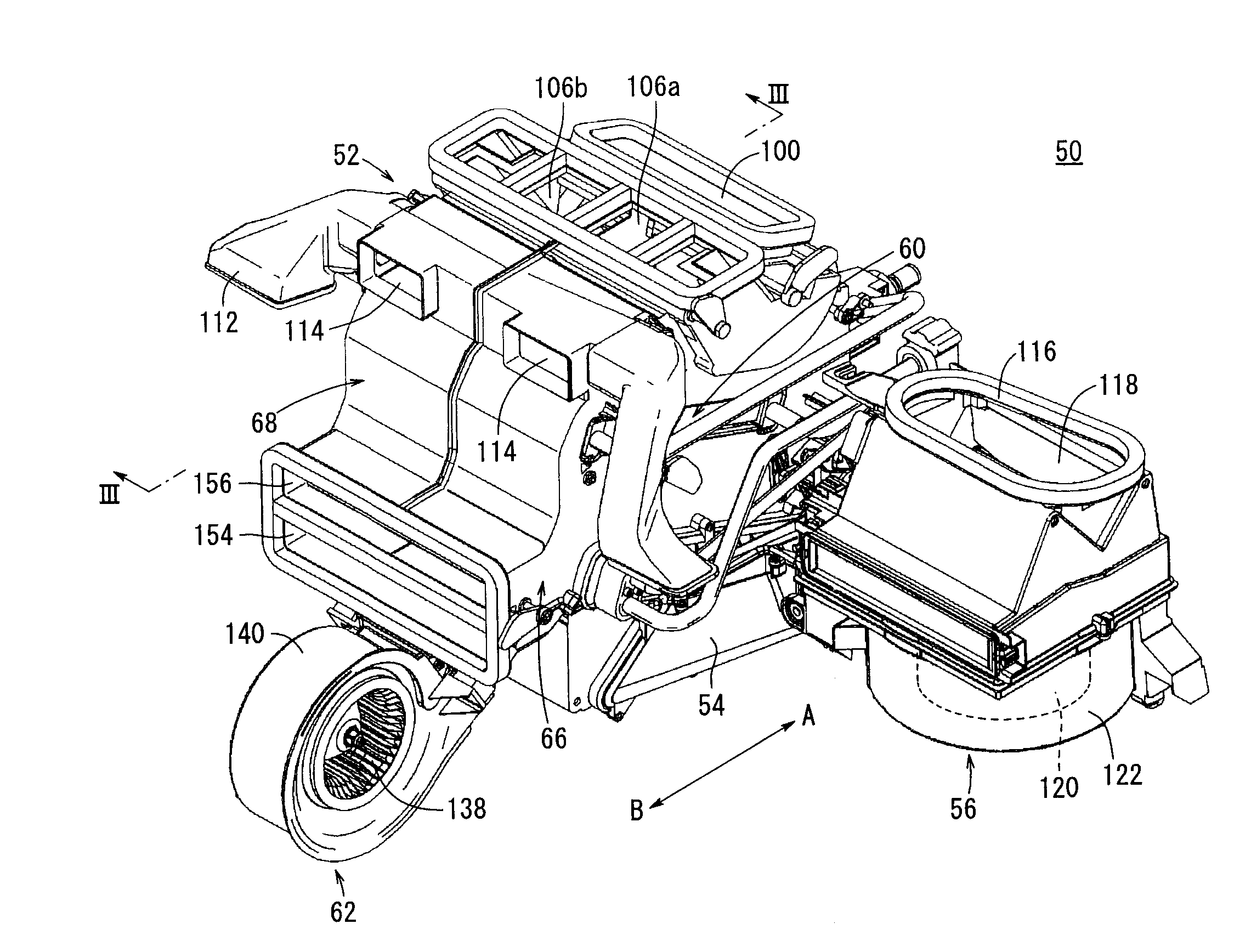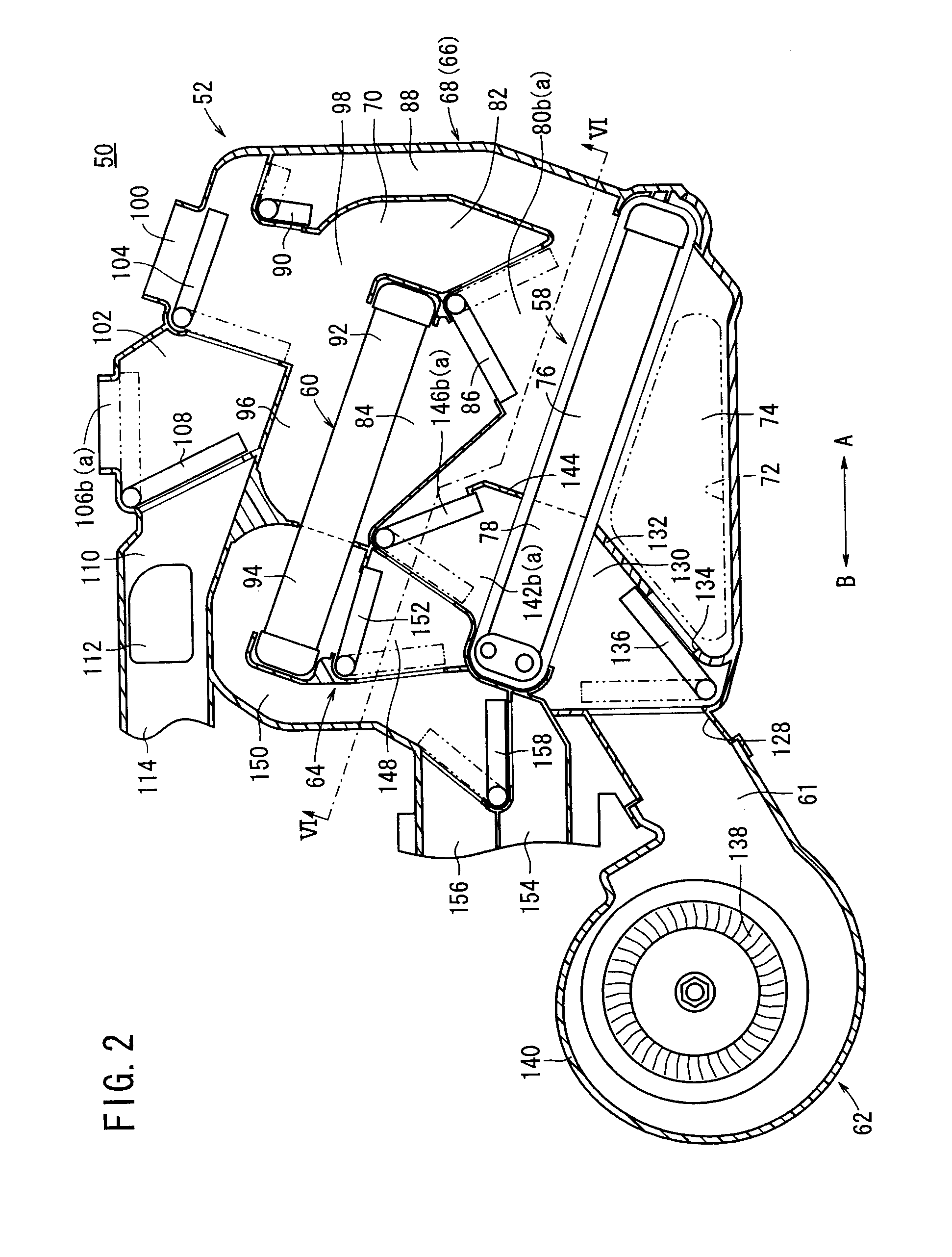Vehicular air conditioning apparatus
a technology of air conditioning apparatus and evaporator, which is applied in the direction of air heaters, indirect heat exchangers, light and heating apparatus, etc., can solve the problems of large size of heat radiation fins themselves, insufficient fluid with respect to heat exchangers, and insufficient fluid inside the connection passages, etc., to reduce fluid resistance, improve energy efficiency, and enhance comfort of occupants in the vehicle compartment
- Summary
- Abstract
- Description
- Claims
- Application Information
AI Technical Summary
Benefits of technology
Problems solved by technology
Method used
Image
Examples
first embodiment
[0072]Embodiments of a vehicular air conditioning apparatus shall be presented and explained in detail below with reference to the accompanying drawings. In FIG. 1, reference numeral 50 indicates a vehicular air conditioning apparatus according to the present invention. The vehicular air conditioning apparatus 50, for example, is installed in a vehicle having three rows of seats arranged along the direction of travel of the vehicle. In the following descriptions, the first row of seats in the vehicle compartment of the vehicle is designated as front seats, the second row of seats is designated as middle seats, and the third row of seats is designated as rear seats.
[0073]Further, the vehicular air conditioning apparatus 50 is installed so that the righthand side thereof shown in FIG. 2 (in the direction of arrow A) is oriented toward the front side of the vehicle, whereas the lefthand side (in the direction of arrow B) is oriented toward the rear side of the vehicle. The arrow A dire...
second embodiment
[0141]Next, a vehicular air conditioning apparatus 400 is shown in FIGS. 12 to 52. FIG. 12 is a perspective view of the vehicular air conditioning apparatus 400. Further, FIG. 13 is a cross sectional view in a central portion (taken along line XIII-XIII in FIG. 12) along the widthwise direction of a vehicular air conditioning apparatus 400, whereas FIG. 14 is a cross sectional view of a region (taken along line XIV-XIV in FIG. 12) somewhat deviated to the side of the second divided casing 418 from the aforementioned central portion.
[0142]As shown in FIGS. 12 to 16, the vehicular air conditioning apparatus 400 according to the second embodiment includes a casing 402 constituted by respective air passages, a first blower unit 406 connected through a connection duct 404 to a side portion of the casing 402 for blowing air toward the front seats of the vehicle, an evaporator (heat exchanger) 408 arranged inside the casing 402 for cooling the air, a heater core (heat exchanger) 410 for h...
PUM
 Login to View More
Login to View More Abstract
Description
Claims
Application Information
 Login to View More
Login to View More - R&D
- Intellectual Property
- Life Sciences
- Materials
- Tech Scout
- Unparalleled Data Quality
- Higher Quality Content
- 60% Fewer Hallucinations
Browse by: Latest US Patents, China's latest patents, Technical Efficacy Thesaurus, Application Domain, Technology Topic, Popular Technical Reports.
© 2025 PatSnap. All rights reserved.Legal|Privacy policy|Modern Slavery Act Transparency Statement|Sitemap|About US| Contact US: help@patsnap.com



